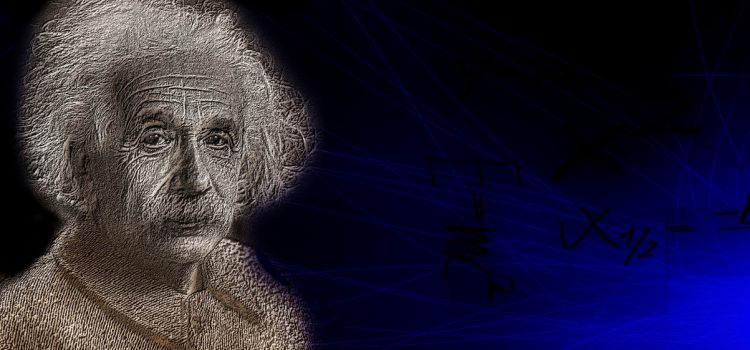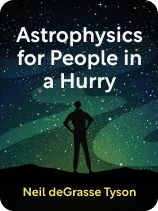

This article is an excerpt from the Shortform book guide to "Astrophysics for People in a Hurry" by Neil de Grasse Tyson. Shortform has the world's best summaries and analyses of books you should be reading.
Like this article? Sign up for a free trial here.
What was Einstein’s cosmological constant? Was he right that he was wrong about it?
In recent decades, astronomers have witnessed a mysterious force they’ve named “dark energy” that’s accelerating the universe’s expansion. The theoretical underpinnings of dark energy go back to Einstein’s equations of relativity.
Read more to understand what scientists know—and what they speculate—about dark energy in the universe.
Dark Energy in the Universe
The existence of dark energy in the universe wasn’t even guessed at until recent years. At the moment, we’re ignorant of its true nature, but Neil deGrasse Tyson reminds us that that’s the condition under which scientific exploration thrives.
Tyson traces dark energy’s theoretical roots back to a concept that Einstein thought was a mistake in his equations. When Einstein developed general relativity, no one knew that the universe was expanding. To explain why the universe wasn’t collapsing under its own gravity, Einstein included a value in his formulae that he called the “cosmological constant.” It was a placeholder for an unknown force that pushed against the pull of gravity, though Einstein didn’t know what it might represent. When the universe was discovered to be expanding as if from a giant explosion, Einstein threw away his cosmological constant, thinking he’d been in error.
(Shortform note: One way to envision Einstein’s cosmological constant is to imagine that empty space isn’t really empty. If empty space has an energy of its own, then the density of that energy is what the cosmological constant represents. The cosmological constant solves another problem in astronomy—without it, the universe’s rate of expansion would imply that it’s as little as seven billion years old, yet we can see stars that are older than that. By factoring in the cosmological constant, Einstein’s theory of gravity corresponds with information from the Cosmic Microwave Background, dating the universe at 13.7 billion years.)
By the end of the 20th century, astronomers had established that the universe is expanding faster than it should be, at least according to previous assumptions that the rate of expansion was constant. Scientists had often wondered if the expansion would continue forever or if the universe would turn back in upon itself in a Big Crunch to counter the Big Bang. Now it’s clear that, not only will the expansion continue, but somehow it’s also accelerating.
No one understands where the energy comes from that drives the galaxies farther apart, but Tyson writes that there’s already a place for it in relativity’s equations—Einstein’s cosmological constant, which astrophysicists now refer to as “dark energy.” Half a century after Einstein’s death, it was shown that he’d been right all along.
| The Shape of the Future of the Universe Ever since it was discovered that the universe was expanding, astrophysicists have debated what form that expansion will take. All the evidence now points toward a scenario in which galaxies grow immeasurably far from each other, the gas clouds from which stars are born grow diffuse, and as a result, star formation ends. All the remaining stars that exist will eventually grow old and fade. The far, far future will be a very cold time. The discovery of dark energy throws a weird twist on how the universe may end. The Big Rip hypothesis suggests that in approximately 22 billion years, the accelerating expansion of the universe could reach a point where the force of dark energy overcomes the force of gravity, tearing apart galaxies, stars, and even atoms—a very different, more apocalyptic demise than astronomers had previously imagined. |
Even more so than dark matter, Tyson reiterates that we don’t have a clue what dark energy is. However, current estimates suggest that dark energy makes up almost 70% of the universe, with dark matter taking up a little more than 25%, and the regular matter and energy we know of comprising a mere 5% of the observable cosmos. Clearly, there’s a lot that we don’t understand.
(Shortform note: Just as we estimate the amount of dark matter by observing its gravitational effects on objects that we can see, we can estimate the amount of dark energy by calculating how much is required to explain the expansion of the observable universe. Some research on the Cosmic Microwave Background hints that dark energy may be a strange medium called “quintessence” that permeates the universe. Others suggest that Einstein’s theory of gravity might simply be wrong when it comes to how matter behaves on the grand cosmic scale.)

———End of Preview———
Like what you just read? Read the rest of the world's best book summary and analysis of Neil de Grasse Tyson's "Astrophysics for People in a Hurry" at Shortform.
Here's what you'll find in our full Astrophysics for People in a Hurry summary:
- Neil deGrasse Tyson's simple explanations of some of the mysteries of the cosmos
- Why everyone should understand where we fit in the universal scheme
- Why humans need to climb off their pedestals






